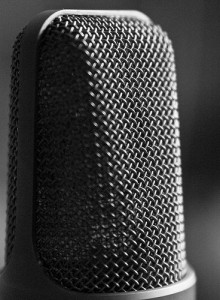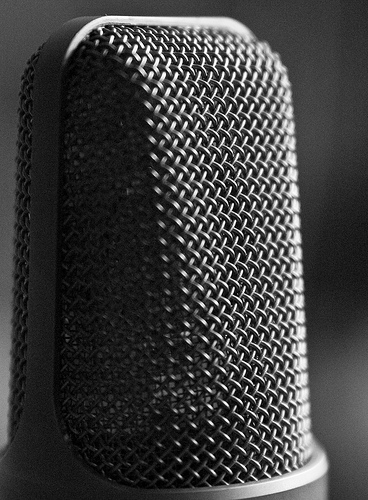
Many of us teachers are probably currently preparing our student for spring recitals, so today I thought it might be beneficial to discuss a way of preparing for performances: recording your students playing their pieces, and then listening to the playback together.
Benefits of Recording
- The student practices performing. Playing for a recording device can be almost as nerve-wracking as playing for an audience! There’s no better way to practice handling nerves than to perform often.
- The student becomes the listener. When listening to the playback, the student is given the opportunity to hear what the piece sounds like from an audience member’s perspective. The student is bound to aurally notice things that they had not realized they were doing (or NOT doing, as the case may be). For example, the student may realize that the dynamic contrasts are not really coming through, or that the melody is not projecting over the accompaniment as well as s/he had thought.
- The student becomes the teacher. After listening to the playback, the student can evaluate piece and identify the areas that went well or could be improved, and then begin discuss ways to improve the piece.
Aurally identifying areas to improve is half the battle. Now the student can use their past knowledge to figure out HOW to improve those areas. Having aurally identified some items that the student may wish to improve, the next logical step is to figure out HOW to improve these areas. Through this process, the student learns self-critique – an important skill to develop in the developing musician.
Recording the Student
- When. We have some options:
- 1) Hold a recording party – invite your students over to play a recital for each other; record the whole thing, play it back, and discuss together. OR:
- 2) Record the students playing their piece(s) during their individual private lessons – choose a week a few weeks before the performance, play it back instantly, and discuss. Either way, the students’ pieces should be nearly performance-ready, if not already so. This is when recording and listening is most beneficial.
- How. Your equipment does not have to be fancy; it just needs to be time efficient. There’s not much point in using technology unless it aids the music making process! We have a few options:
- 1) Cassette tape recorders are the old fashioned but fairly reliable way to go if you aren’t feeling particularly tech-saavy. The recording quality might not be the best, but it would serve the purpose satisfactorily.
- 2) Most laptop computers nowadays contain internal microphones that can record any outside sounds (although they might not be the highest of quality). Using a computer program such as Garage Band (comes pre-installed on all Macs) or Audacity (free software available via download), recording becomes quite easy.
- 3) Most laptops also have built-in webcams, which means you can videotape the performance so the student can both listen to AND watch his/her performance!
- 4) An external videocamera also is an option, if you have one. It may be worth investing in one if you are interested in posting student performances on YouTube or on your studio website (with the parents’ permission, of course).
- 5) External digital recording devices usually provide a much higher quality recording than the internal microphone of a laptop computer or the videocamera. Make sure it is a recorder that is intended for music, rather than a digital voice recorder, which generally do NOT work very well for recording music. An example of a digital recorder that works well for music is the Zoom H2 Handy Portable Stereo Recorder
(click to view the listing on Amazon). I bought one of these recorders a few years ago, and have been very happy with it.
Playback Time!
- Listen to the playback with the student. If you are playing back from your computer, plugging in external speakers will improve the quality of the playback.
- Follow along in the musical score as you listen. Ask the student to mentally take note of any areas that surprised them, areas that were successful, areas that need improvement, etc. If you took video, it may be best to only allow the student to listen for the initial playback without watching, so that they are focusing on the sound of their playing rather than the sight.
- Discuss. After the playback, ask the student to discuss what they liked about their performance, and what could be improved. Sample questions to ask:
- “Which areas did you like the best? What did you like about those areas?”
- “Where you surprised by any areas? What did you hear?”
- “Which areas do you think could be improved? What can you do in your practice at home to improve those areas?”
- “What else did you notice?”
The student will benefit from this exercise the most if they are encouraged to think through these questions him-/her-self and evaluate their own playing, rather than being told what the teacher heard – they get enough of that at the average lesson. This exercise is designed to encourage self-critique and motivation for improvement, as well as to develop listening skills in the student.
If you’ve ever tried recording your students’ playing, please share your experiences in the comments! I’d love to hear about it.
Photo credit: http://www.flickr.com/photos/simondeanmedia/ / CC BY 2.0



This is a great idea – we videotape our students and post their performance on our studio website. Practising increases 10 fold in the week before the taping! Having a cool edited video of them playing has also resulted in advertising for our studio as the link is forwarded around the community by proud parents!
Great comment! All those things are GREAT benefits of recording/videotaping students’ playing. =)